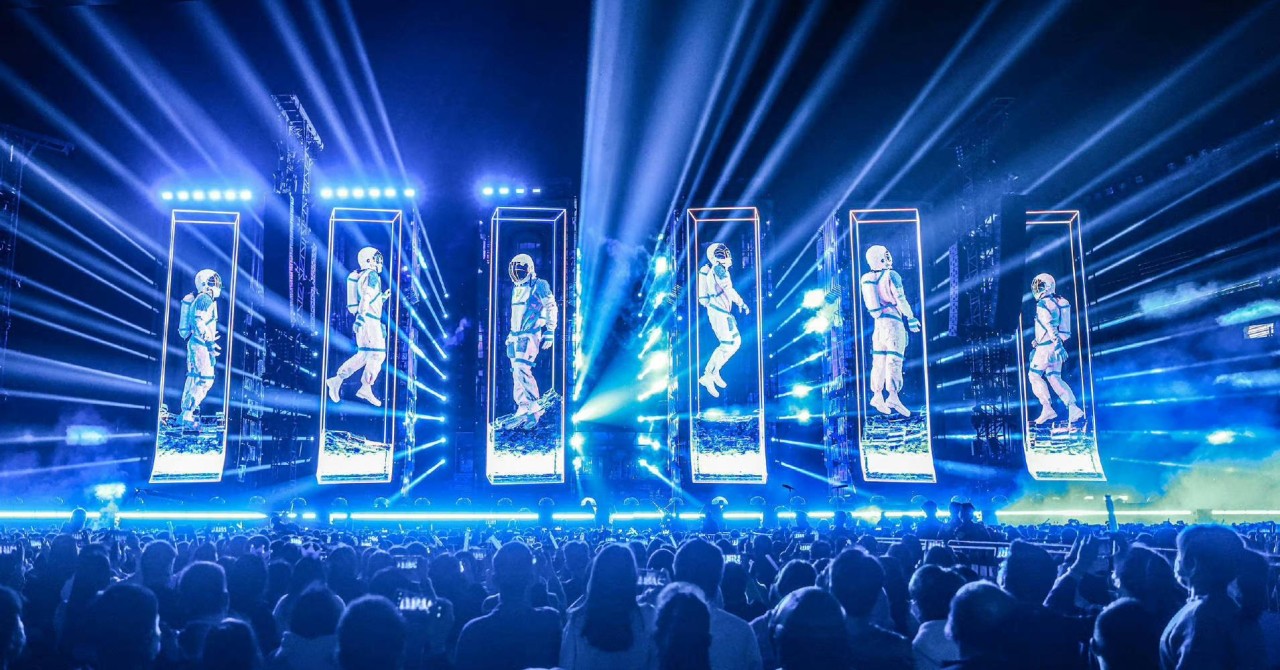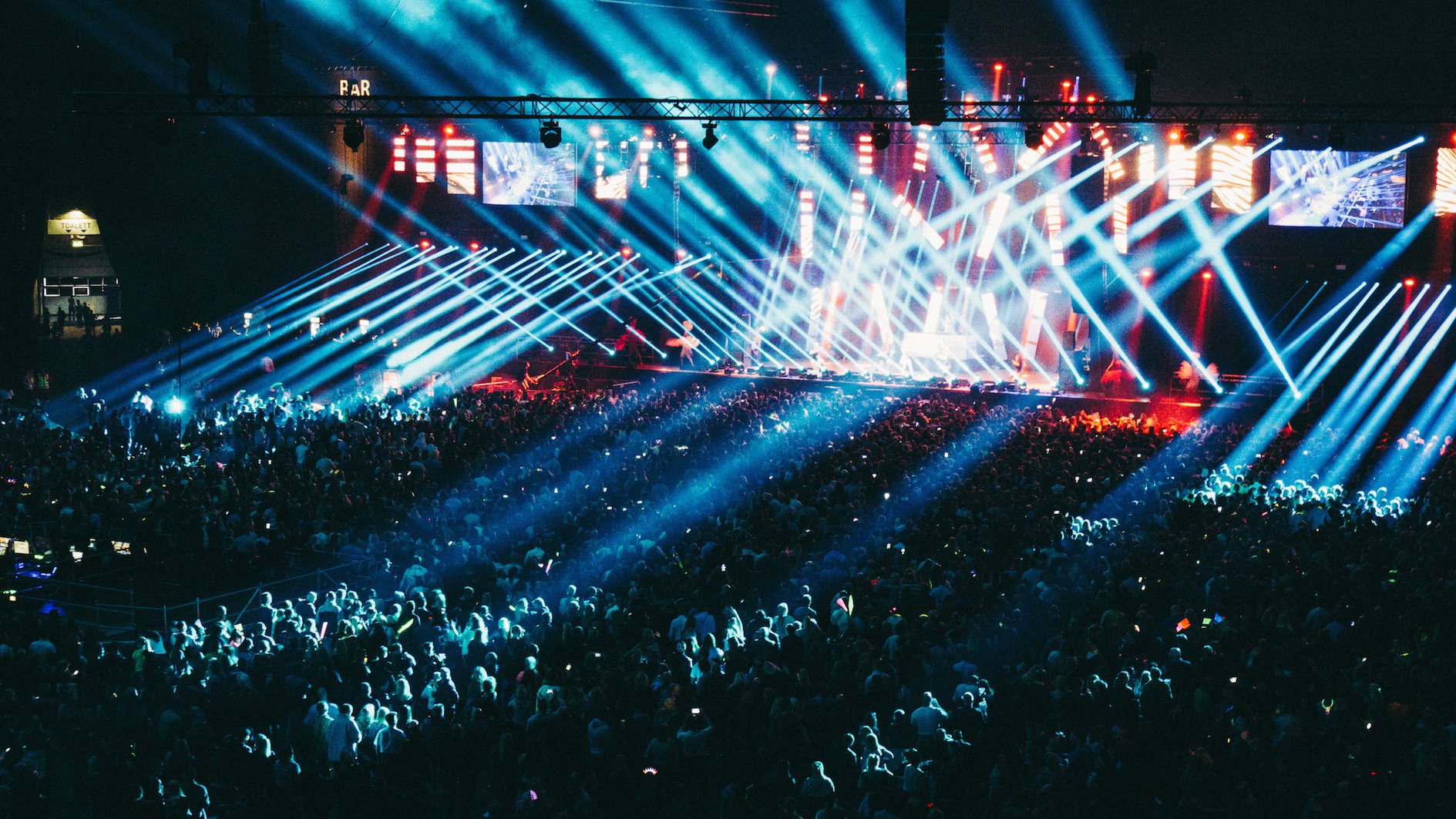How Technology In Concert Staging Is ReShaping Performances
Experience the future of live entertainment with cutting-edge technology in concert staging! Immerse yourself in a captivating blend of innovation and artistry, where every performance becomes a mesmerizing spectacle.
Author:Elisa MuellerReviewer:James PierceFeb 13, 20248.7K Shares148.3K Views

Step into a realm where technology in concert stagingand live music converge, creating a sensory symphony that transcends the boundaries of ordinary concerts. The stage is no longer just a platform; it's a canvas of innovation, where cutting-edge technology weaves seamlessly with the rhythm and melody, elevating the entire concert experience.
Imagine vivid 3D mapping projections that transform the stage into a dynamic visual spectacle, synchronized with the beats and lyrics to create a mesmerizing journey for the audience. Holographic performers materialize before your eyes, blurring the lines between reality and imagination.
How Technology Is Shaping The Concert Staging Landscape
Hold on to your roadie hats, music fans, because the concert stage is undergoing a revolution! Technology is no longer just humming in the background it's taking center stage, transforming the way we experience live music. From mind-blowing visuals to immersive environments, let's dive into the tech trends reshaping the concert landscape:
1. Visual Extravaganzas
- Projector Powerhouse -Gone are the days of static backdrops. High-resolution projectors paint the stage with dynamic visuals, morphing between landscapes, abstract art, and even real-time reactions to the music. Imagine lasers dancing to the beat or a digital city rising behind the band!
- LED Revolution -Flexible LED panels are taking over! These modular screens bend and twist, creating captivating shapes and immersive environments. Artists can project themselves onto the panels, creating surreal illusions or interactive experiences.
- Holographic Heroes -RememberTupac's holographic resurrection at Coachella? Holograms are no longer sci-fi fantasy. Artists can appear as larger-than-life projections, collaborate with virtual versions of themselves, or even bring deceased legends back to the stage.
2. Interactive Engagements
- Wearable Tech Symphony -Imagine your wristband syncing with the beat, lighting up in time with the music. Wearable tech is fostering audience participation, creating a sea of synchronized light and creating a shared, interactive experience.
- Augmented Reality (AR) -Overlay the real world with digital magic! ARglasses or phone apps can add virtual elements to the stage, making dragons soar around the band or transforming the venue into a fantastical wonderland.
- Multi-sensory Mayhem -The future of concerts isn't just visual. Haptic technology can vibrate seats in time with the bass, scent diffusers can release aromas evocative of the music, and even wind machines can mimic the feeling of being outdoors.
3. Beyond The Stage
- Live-streaming Reinvented -Virtual reality (VR) headsets put you front-row center, even if you're miles away. Imagine feeling the energy of the crowd and experiencing the concert in 360 degrees from the comfort of your living room.
- Democratized Design -3D printing and rapid prototyping allow for more affordable and innovative stage designs. Smaller artists and venues can now access custom-built sets that were once reserved for megastars.
- Sustainable Solutions -From energy-efficient lighting to recycled materials, tech is helping make concerts more eco-friendly. Imagine solar panels powering the stage or bioluminescent plants illuminating the venue.
Are There Interactive Technologies Used In Concert Staging?
Absolutely! Interactive technologies are increasingly blurring the lines between performer and audience, transforming concerts from passive observations to dynamic, shared experiences. Here are some exciting examples:
1. Interactive Screens and Projections -Touch-sensitive screens and projection mapping can turn the stage and even the venue into a giant, responsive canvas. Audiences can influence visuals, trigger effects, or even vote on setlists in real-time, making them active participants in the show.
2. Augmented Reality (AR) Overlays -Imagine dragons soaring through the arena or holographic butterflies fluttering around the band, all viewed through your smartphone or AR glasses. Apps like Layar and Blippar can overlay digital elements onto the real world, adding a layer of fantastical interactivity to the concert experience.
3. Haptic Feedback and Multi-Sensory Effects -Feeling the rumble of a bassline through your seat or smelling the salty air of a pirate ship adventure on stage? Haptic technology and scent diffusers can add another dimension of immersion, blurring the lines between the stage and the audience's perception.
How Has Technology Impacted Sound Engineering In Concerts?
Technology has revolutionized sound engineering in concerts, transforming a once-manual craft into a sophisticated science, vastly improving audio quality and audience experience. Let's dive into some key impacts:
1. Advanced Audio Systems
- Digital Mixing Consoles -Gone are the days of bulky analog mixers. Digital consoles offer precise control over every aspect of the sound, allowing engineers to mix, manipulate, and apply effects with incredible accuracy and flexibility.
- Line Arrays and Point Source Speakers -Traditional speaker stacks have given way to sophisticated speaker systems like line arrays and point source speakers. These provide more even sound distribution throughout the venue, minimizing sonic dead zones and ensuring everyone enjoys the audio equally.
- Subwoofers and Low-Frequency Management -Powerful subwoofers deliver tight, impactful bass without muddy mid-range frequencies, while low-frequency management systems prevent unwanted vibrations and protect equipment.
2. Digital Processing And Effects
- Digital Signal Processing (DSP) -DSP plugins offer a vast array of effects, from reverbs and delays to compressors and equalizers, allowing engineers to sculpt the sound in real-time and tailor it to the specific venue and music genre.
- Microphone Technology -Advances in microphone design and placement techniques ensure pristine capture of instruments and vocals, minimizing unwanted noise and maximizing clarity.
- Automatic Mixing and Tuning -Software tools can now assist with tasks like setting microphone levels and tuning instruments, freeing up engineers to focus on the artistic aspects of the mix.
3. Enhanced Monitoring And Control
- In-Ear Monitors -Musicians can now hear a custom mix of their own instruments and the overall sound through in-ear monitors, reducing stage volume and improving their performance by providing clear audio cues.
- Wireless Systems -Gone are the days of tangled cables! Wireless microphones and in-ear monitor systems minimize stage clutter and improve performer freedom of movement.
- Advanced Monitoring Systems -Engineers can monitor the sound from various points in the venue using software and specialized hardware, ensuring consistent audio quality throughout the space.
4. Accessibility And Innovation
- Assistive Listening Technologies -Hearing loops and other assistive technologies ensure audiences with hearing impairments can fully enjoy the concert experience.
- Immersive Audio Formats -Technologies like Dolby Atmos and spatial audio are creating more immersive and realistic soundscapes, bringing audiences closer to the music than ever before.
- Artificial Intelligence (AI) -AI-powered tools are emerging to assist with tasks like microphone placement optimization and automatic mixing adjustments, further revolutionizing the workflow of sound engineers.
What Role Do Holographic Displays Play In Concert Technology?
Holographic displays, once relegated to science fiction, are rapidly becoming a game-changer in concert technology. While not strictly "true" holograms (which require light diffraction), these advanced projection systems create the illusion of 3D objects floating in space, adding a layer of wow factor and interactive potential to live performances. Here's a breakdown of the role holographic displays play in concert technology:
1. Bringing Legends Back To Life
Remember Tupac's holographic resurrection at Coachella? This groundbreaking application has opened doors for deceased artists to "perform" again, collaborating with live musicians or even recreating iconic shows. Imagine Elvis Presley singing alongside a modern pop star or Michael Jackson moonwalking across the stage, all thanks to holograms.
2. Enhancing Live Performances
Holographic projections can augment live performances in many ways. Artists can appear as larger-than-life versions of themselves, interact with virtual counterparts, or even create surreal illusions and visual metaphors. Imagine a singer morphing into different characters or a band interacting with holographic creatures on stage.
3. Interactive Experiences
Holographic displays can be touch-sensitive, allowing audience members to interact with the projections. Imagine reaching out to "touch" a virtual object or influencing the visuals in real-time through your smartphone. This adds a layer of participation and engagement, blurring the lines between performer and audience.
4. Storytelling And Visual Effects
Holographic displays offer boundless possibilities for visual storytelling. They can bring fantastical creatures to life, create dynamic set designs that morph throughout the show, or even transport the audience to different locations. Imagine watching a concert where dragons soar above the stage or a historical reenactment with life-sized holographic figures.
5. Technical Considerations
While impressive, holographic displays still require sophisticated technology and careful planning. Proper projection mapping, high-resolution content, and strategic placement are crucial for creating convincing illusions. Additionally, the cost and technical expertise needed make this technology more accessible to larger productions.
FAQ's About Technology In Concert Staging
What Are The New Technologies On Stage?
Automation Cable systems, motors, electronic controls, and control software can all help in the journey toward seamless automation. This theatre technology allows directors to add more complex set elements and create smooth transitions without the 'clomp clomp' of crew members switching set pieces around.
What Is A Concert Staging?
For those unfamiliar with the concept of a staged concert, it is similar to a full production with more emphasis on the music. Such concerts rarely have any significant sets or props and while the performers are generally costumed, that is the only “design” element.
What Is Concert Software?
Concert allows you to build and modify configurations for Power Control products, Network gateways and many other ETC products. Concert's interface is intuitive enough for anyone to use, even if you have very little lighting experience. You can access the interface on your PC, Mac or ETC Eos or Cobalt lighting desk.
Conclusion
Technology in concert staging has emerged as a transformative force, reshaping the landscape of live entertainment. The marriage of cutting-edge innovations, from 3D mapping to holographic displays, has not only elevated the visual and auditory dimensions of concerts but has also redefined the very essence of the live music experience. As we witness the convergence of creativity and technology, the stage has become a dynamic canvas, offering artists unprecedented opportunities to craft immersive and unforgettable performances.

Elisa Mueller
Author

James Pierce
Reviewer
Latest Articles
Popular Articles


